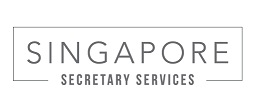In Singapore, companies are allowed to carry forward Unutilised Items subject to conditions being met.
What are Unutilised Items?
A company may utilise capital allowances, tax deductions or donations to offset against its income. For example, donations to an Institute of Public Character (IPC) will attract 250% allowable tax deductions. Therefore, if a company has a profit of $100,000 and makes a $2,000 donation to an IPC, it is allowed to set off $5,000 (250% of $2,000) of the $100,000 profit. Therefore, it will only be taxed based on a $95,000 profit.
However, if a company has no profits, it will not have any profits to offset such items.
In such instances, these items are considered Unutilised Items.
What can a company do with Unutilised Items?
- It can carry forward its unutilised capital allowances, trade losses and donations to set off the income of future Years of Assessment (YAs);
- It can carry back the current year’s unutilised capital allowances and trade losses to set off the income earned in the immediate preceding YS (note that donations will not be allowed this treatment);
- It can transfer its current year’s unutilised capital allowances, trade losses and donations to related companies through Group Relief.
The most common treatment of Unutilised Items will be option 1.
Time limits when carrying forward Unutilised Items
Unutilised capital allowances can be carried forward indefinitely.
Unutilised donations can be carried forward for up to 5 Years of Assessment.
Qualifying conditions
The company must satisfy the shareholding test to carry forward the unutilised capital allowances, trade losses and donations. The company is deemed to have satisfied the shareholding test when there is no substantial change in its shareholders and their shareholding at the relevant dates.
As for unutilised capital allowances, they can only be deducted against future income if the company continues to remain in the same trade or business. i.e. there is no change in the company’s principal activities.
Shareholding Test
Step 1: Identify two pertinent dates:
Relevant Dates for Unused Capital Allowances:
- First Date: Last day of the Year of Assessment (YA) in which the capital allowances were accrued.
- Second Date: First day of the YA in which the capital allowances are intended to be deducted.
Relevant Dates for Unused Trade Losses/Donations:
- First Date: Last day of the fiscal year in which the trade losses or donations occurred.
- Second Date: First day of the YA in which the trade losses or donations are planned to be deducted.
Step 2: Determine the shareholders who hold shares on both relevant dates.
Step 3: Calculate the total number of shares held by these shareholders on each relevant date.
Step 4: Aggregate the shares owned by these shareholders collectively as a percentage of the total number of shares on each relevant date.
If the shareholding percentage of common shareholders on these two relevant dates is 50% or higher, there is no significant alteration in shareholders and their shareholdings, thus satisfying the shareholding test. Otherwise, it signifies a substantial change in shareholders and their shareholdings.
Waiver of Shareholding Test
Your company has the option to request a waiver of the shareholding test under Section 37(16) of the Income Tax Act 1947 for unused trade losses and Section 23(5) for unused capital allowances if the substantial change in shareholders results from:
- Genuine commercial motives unrelated to obtaining tax benefits
- Nationalization
- Privatization of government-owned enterprises
- Public listing and trading of the company’s or its parent holding company’s stocks on a recognized Stock Exchange
To apply for a waiver of the shareholding test, your company must provide the following details via myTax Mail:
- Date of the substantial change in shareholders or takeover
- Explanation of the reasons (both commercial and non-commercial) leading to the substantial change in shareholders or takeover
- Benefits obtained by the acquiring company
- Details of the applicant’s net worth
- Acquisition price paid by the acquiring company for the applicant’s shares and the rationale behind determining such a price
- Explanation of why the share price does not align with the applicant’s net worth
- Future plans of the applicant and whether they have been executed, with reasons if not
- Transfer of activities from the acquiring company or other companies under common control to the applicant, if applicable
- Diversion of future expansion plans from associated companies under common control to the applicant, if applicable
- Chart illustrating the group structure before and after the substantial change in shareholders
Submitting the application for a waiver of the shareholding test in a timely manner facilitates the retrieval of relevant records to support the application, allowing the company to apply for the waiver even if it is unable to utilize the unused items at the moment.
If you need assistance on matters dealing with your company’s Unutilised Items or with obtaining a waiver of the Shareholding Test, you can email the Raffles Corporate Services tax consultancy team at [email protected].
Yours sincerely,
The editorial team at Raffles Corporate Services







Leave A Comment